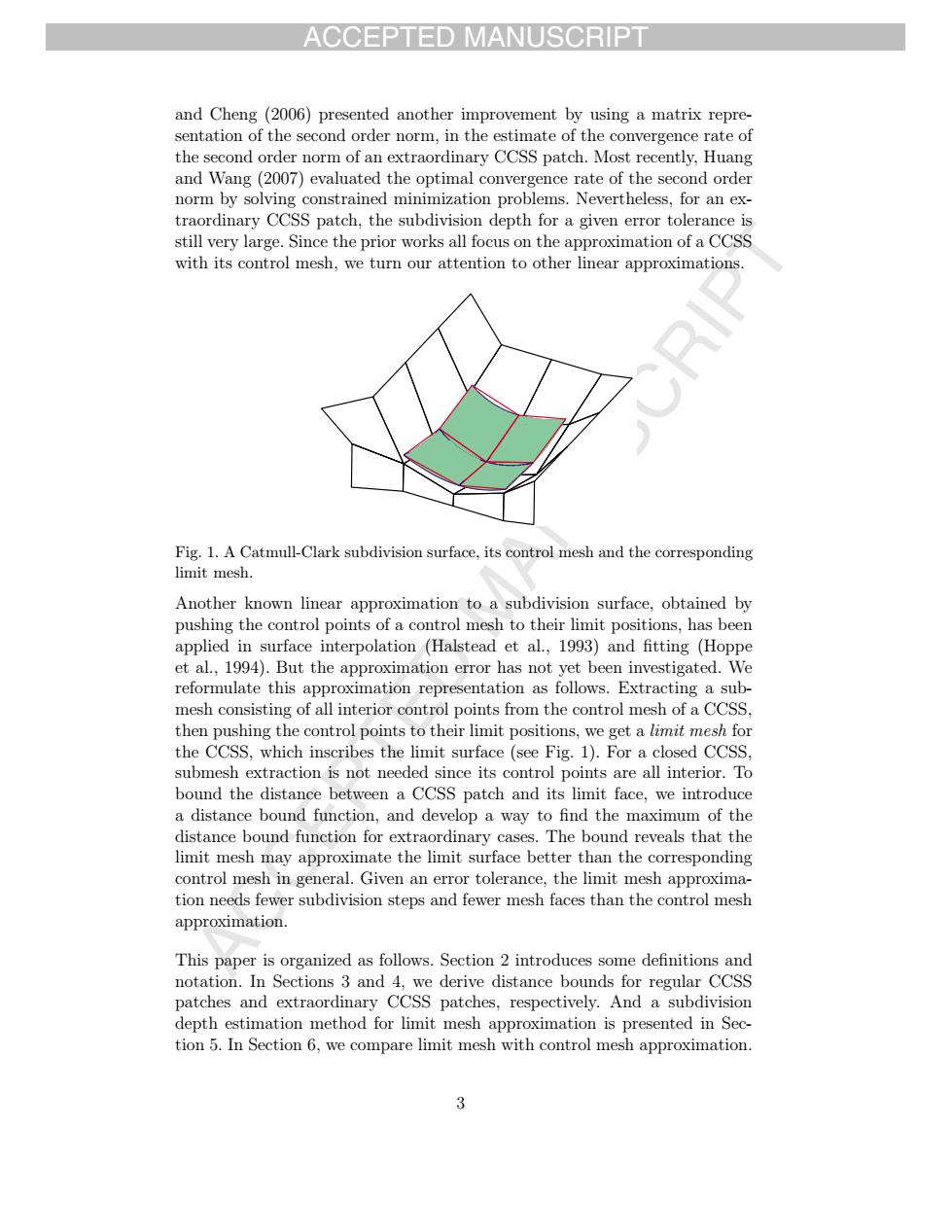正在加载图片...

ACCEPTED MANUSCRIPT 2007c e the fzACatmiLcCarkaubiwianurt and the coeresponding the limit andin edein CC petches.repACCEPTED MANUSCRIPT ACCEPTED MANUSCRIPT and Cheng (2006) presented another improvement by using a matrix representation of the second order norm, in the estimate of the convergence rate of the second order norm of an extraordinary CCSS patch. Most recently, Huang and Wang (2007) evaluated the optimal convergence rate of the second order norm by solving constrained minimization problems. Nevertheless, for an extraordinary CCSS patch, the subdivision depth for a given error tolerance is still very large. Since the prior works all focus on the approximation of a CCSS with its control mesh, we turn our attention to other linear approximations. Fig. 1. A Catmull-Clark subdivision surface, its control mesh and the corresponding limit mesh. Another known linear approximation to a subdivision surface, obtained by pushing the control points of a control mesh to their limit positions, has been applied in surface interpolation (Halstead et al., 1993) and fitting (Hoppe et al., 1994). But the approximation error has not yet been investigated. We reformulate this approximation representation as follows. Extracting a submesh consisting of all interior control points from the control mesh of a CCSS, then pushing the control points to their limit positions, we get a limit mesh for the CCSS, which inscribes the limit surface (see Fig. 1). For a closed CCSS, submesh extraction is not needed since its control points are all interior. To bound the distance between a CCSS patch and its limit face, we introduce a distance bound function, and develop a way to find the maximum of the distance bound function for extraordinary cases. The bound reveals that the limit mesh may approximate the limit surface better than the corresponding control mesh in general. Given an error tolerance, the limit mesh approximation needs fewer subdivision steps and fewer mesh faces than the control mesh approximation. This paper is organized as follows. Section 2 introduces some definitions and notation. In Sections 3 and 4, we derive distance bounds for regular CCSS patches and extraordinary CCSS patches, respectively. And a subdivision depth estimation method for limit mesh approximation is presented in Section 5. In Section 6, we compare limit mesh with control mesh approximation. 3